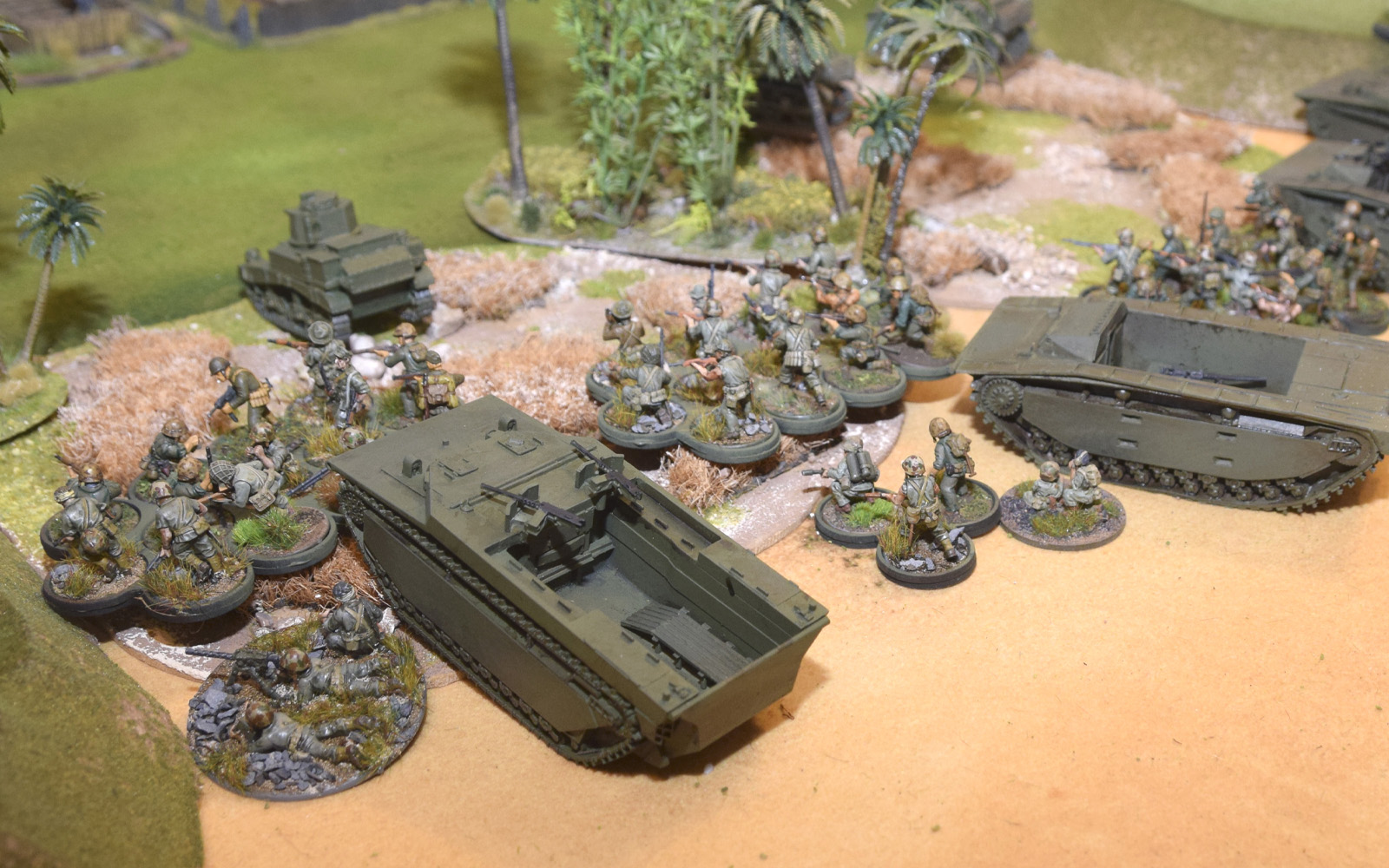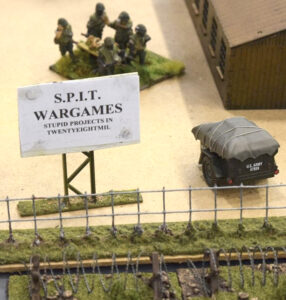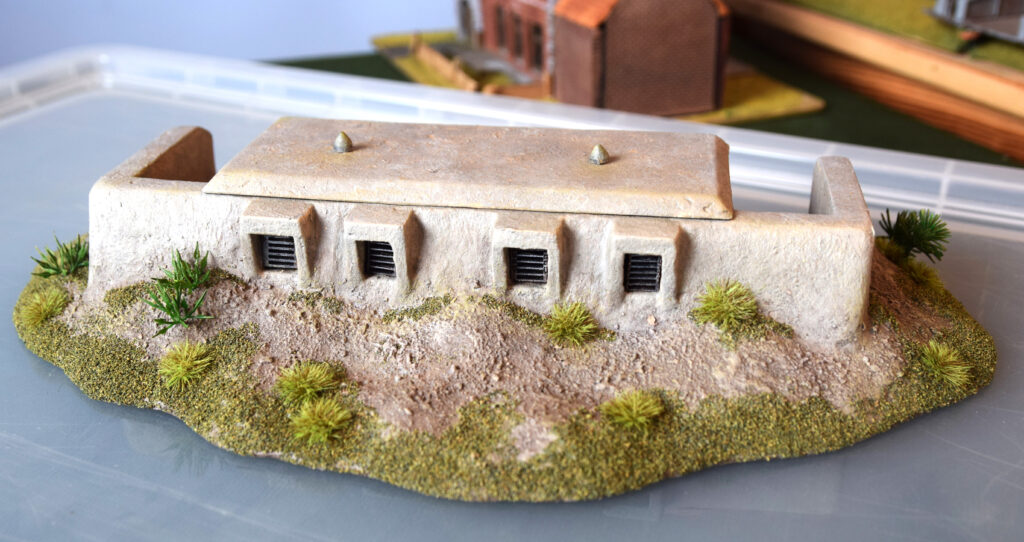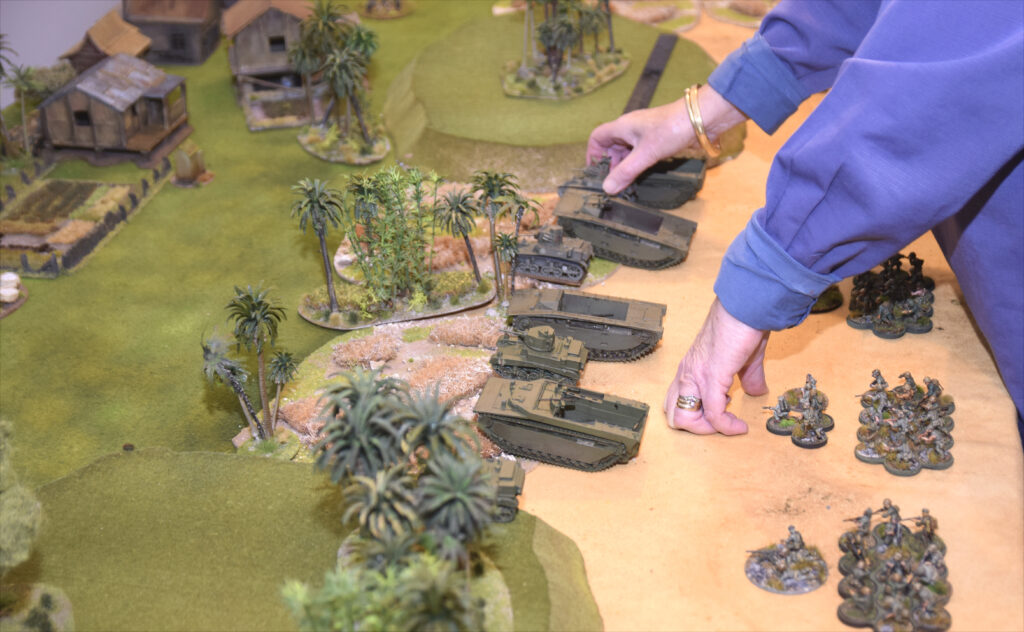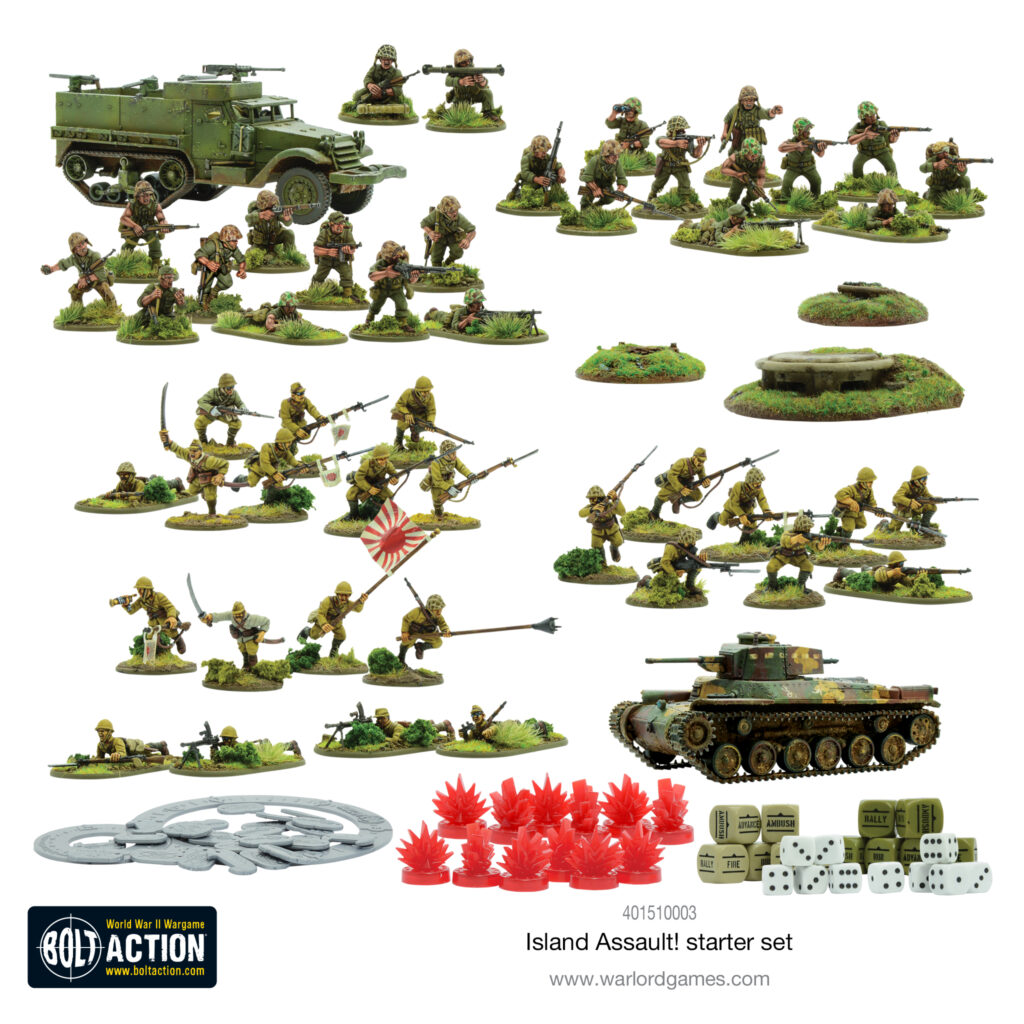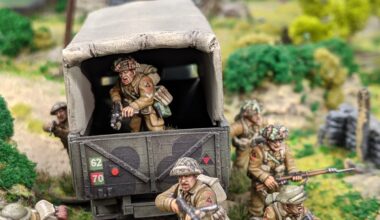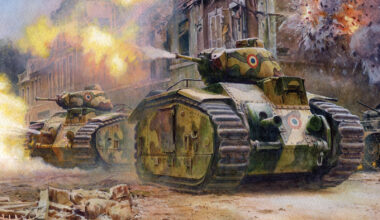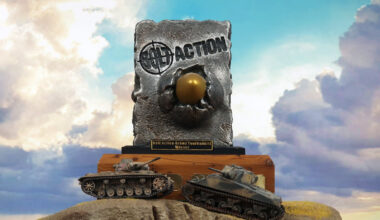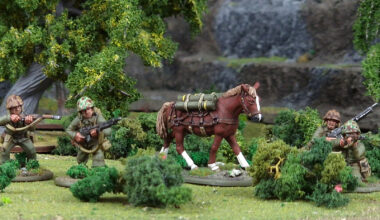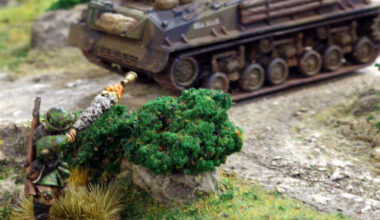We understand that our figures, vehicles and buildings are made to a given scale or size, but that does not apply strictly to the rest of our game – notably trees, rivers and weapon ranges. Our tables seldom feature a river that is anything much more than a stream, I don’t recall ever seeing a wargame tree three times the height of a two-storey house, and as for weapon ranges… perhaps it’s not best to reignite that discussion.
To get our game onto a manageable table we suspend disbelief and apply a ground scale that bears no relationship to the physical scale of our models. There’s nothing wrong with that; mapmakers do it all the time. The Ordnance Survey symbol for a church taken literally would suggest that even the tiniest parish has a church nearly 100 yards long and that all bridges are at least 50 yards wide. Ground scale is a matter of practicality and common sense, but it’s not always vital or even desirable.
From time to time, we like to run games that we call ‘True Scale’; games where the terrain is actually in scale with the soldiers – this explains why our group is called S.P.I.T. Wargames: Stupid Projects In Twentyeightmil. It does sound unlikely, but there were thousands of Second World War actions that could be portrayed in True Scale without having a massive table. A great many actions revolving around a single platoon took place across a single street or along a single city block or within a couple of acres (or about a hectare) of countryside. That’s probably not very useful information if you’re not a farmer or a town planner, but think of it in terms of a rugby pitch, which is a bit more than two acres and very close to being a hectare. In our chosen 1/56 scale a rugby pitch would pretty much fit onto our preferred 6’x4’ foot table. In a hectare of forest or town you could quite easily lose sight of a whole company let alone a platoon and a couple of vehicles, so for a True Scale game you just need a lot of scenery to block line of sight.
This is all very well, but where does the S.P.I.T. element come into it? We like ‘True Scale’ games and we also like games that reflect specific historical incidents. We also like big games. Great big games. Stupid-big games. This will be one of those. We chose it for several reasons apart from it being large but manageable. There is a good deal of data to be had. There’s the after-action report, a really useful bit of newsreel (linked below) showing the first wave departing and no less than four published accounts by combatants.
In August – at the Claymore Show (Edinburgh’s premier wargames show) – we are going to stage a True Scale game of a USMC beach landing. All of it. The operation in question is the landing on Ngesebus by 3rd Battalion 5th Marines in September 1944. If that unit sounds familiar it may be because you watched the TV show The Pacific a few years back. Two of the main characters – Sledge and Burgin – served as mortar men in ‘K’ Company. The incident where Sledge and Burgin become aware that they have set up next to a bunker which is still full of Japanese soldiers actually took place on Ngesebus. It’s still standing (see the below video), and Geoff Lacey at Purple Lion Creations has very kindly provided a superb model of it for the project.
As Pacific landing operations go, Ngesebus was a small one. The island is pretty tiny and only needed to be attacked at all to A) deal with two large artillery pieces and some mortars that were firing on US forces on Peleliu and B) to deny the Japanese use of an airstrip that they had recently constructed. Small as it is – and you can see that from aerial photos on Google Maps – Ngesebus is still far too large to put on a tabletop in 28mm, but for the purposes of the game we do not actually need the whole thing, just a slice extending from the shore to the western end of the airstrip – about 400 x 100 yards; an 18’ foot x 5’ table will do quite neatly.
How will this differ from a more conventional game of Bolt Action? The realistic answer is ‘not very much’. The biggest alteration is the activation process simply because we might well have six players – if not more. We have developed a system, which we’ve used for years, to avoid players in multiplayer games such as this having a lengthy wait for one of their dice to come out of the bag. The players are each limited to eight activation dice (though they may well have several more units than that) and a designated player or umpire has a deck of eight black and eight red cards. Turn over a red card and all the Allied players apply an activation die, turn a black card and all the Axis players do so and then so on until the deck is exhausted. Dice are picked up, the deck is shuffled and turned over and a new turn begins. Players are responsible for their own dice so if someone fails to pick up any of their dice at the end of the turn they will miss out on an activation in the subsequent turn – this happens to most of us at least once in a game and we regard it as ‘friction’ and also a good excuse to laugh at one another.
How about ranges? No difference to speak of. Ngesebus was pretty densely forested with a mix of coconut and casuarina and as umpire/designer/organiser/scenery monkey/dogsbody, I’ll simply declare that visibility is limited to 24 inches (about 50 yards of ‘real life’) save in a few clearly designated areas – basically the airstrip and a cleared space which I think may have been a parking area for aircraft, however, I’m awaiting confirmation of that from historical aerial reconnaissance photos which I hope to get from US military archives and perhaps information from the USMC archaeological officer.
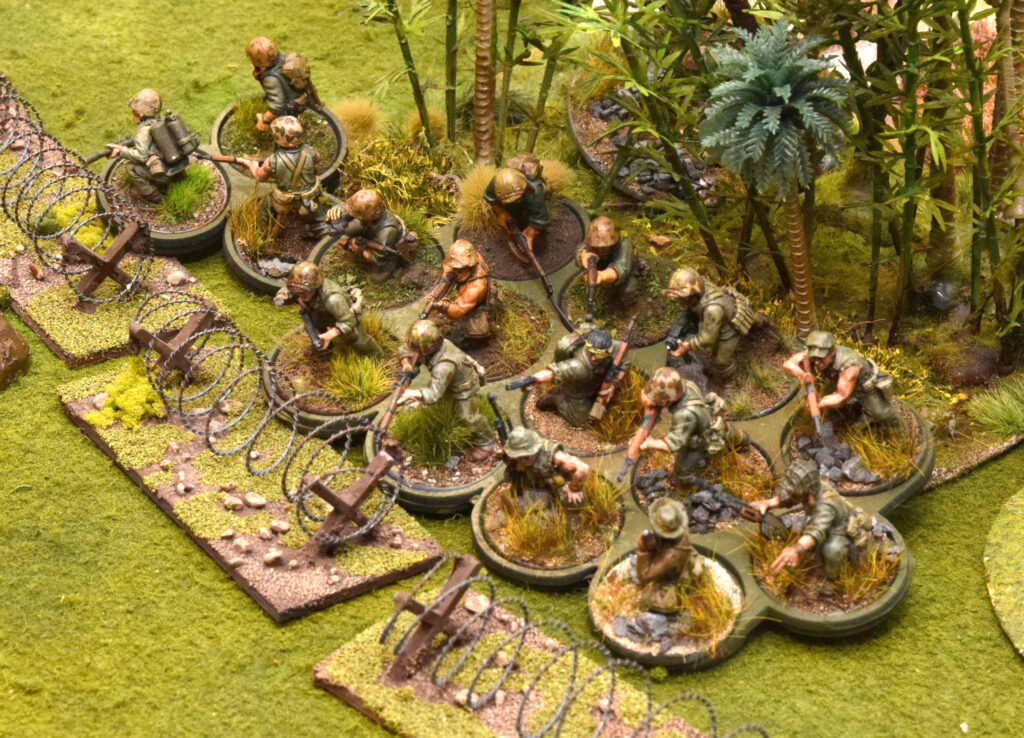
Isn’t this going to require quite a few figures and vehicles? Well….yes; however, my better half has a full-strength company of USMC plus an extra platoon, and she is busily painting up another one as I write. She already has enough LVTs for them as well as most of the 25 armoured fighting vehicles required – plus we will have the support of figure-painters extraordinaire Don Stewart and Tom Howley at Alba Studio who also have a very substantial collection. This is not the biggest project we have undertaken by quite a margin, but it’s far and away the biggest ‘True Scale’ game we have attempted – in fact we think it may be the biggest game of this nature that anyone has ever attempted…but if you know different, we’d be keen to hear about it!
Island Assault!
If you’re looking to get started with your own island-hopping Bolt Action campaigns, look no further than the Island Assault starter set!
Containing two opposing forces set amongst the many islands in the Pacific theatre, Island Assault! contains the Bolt Action 2nd edition rules as well as a scenario booklet guiding you through your first steps in the game. Before long you’ll be adding to your new army and wreaking havoc on your foes be they fighting for Uncle Sam or the Emperor!
Full Contents:
- Bolt Action A5 Rulebook
- Island Assault booklet
- 24 Imperial Japanese Army soldiers
- Chi-Ha tank
- 24 US Marines
- M3A1 Half-track
- Dice
- Pin marker sprue
- Template sprue
- 1 Pillbox (exclusive to this set)
- 2 Spiderholes (exclusive to this set)
